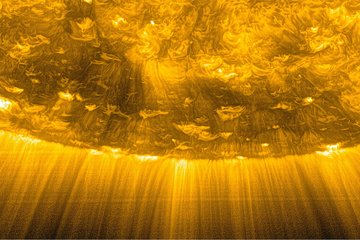All genres
1.
Journal Article
Isotopic evidence for a common parent body of IIG and IIAB iron meteorites. Geochimica et Cosmochimica Acta 382, pp. 118 - 127 (2024)
2.
Journal Article
Isotopic constraints on genetic relationships among group IIIF iron meteorites, Fitzwater Pass, and the Zinder pallasite. Meteoritics and Planetary Science 59, pp. 778 - 788 (2024)
3.
Journal Article
Isotopic constraints on genetic relationships among group IIIF iron meteorites, Fitzwater Pass, and the Zinder pallasite. Meteoritics & Planetary Science, pp. 1 - 11 (2023)
4.
Journal Article
Isotopic evidence for pallasite formation by impact mixing of olivine and metal during the first 10 million years of the Solar System. PNAS Nexus 1 (1) (2022)
5.
Journal Article
Collisional mixing between inner and outer solar system planetesimals inferred from the Nedagolla iron meteorite. Meteoritics and Planetary Science 57, pp. 261 - 276 (2022)











